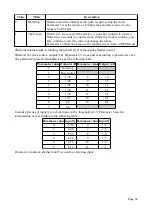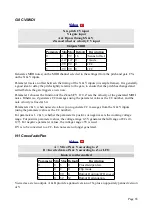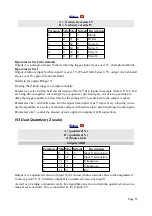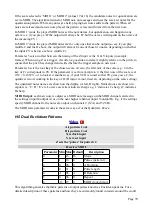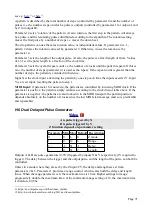
When Z changes, the scale is displayed on the LEDs. The scale's number in the following table is
shown, and after a short pause, the scale's name.
Number
Scale
Displayed name
0
chromatic
Chromatic
1
major scale
Major
2
minor scale
Minor
3
major triad
Triad
4
minor triad
3b+5
5
root+5th
Fifth
6
major triad+6th
Triad+6
7
minor triad+6th
3b+5+6
8
major triad+7th
Triad+7
9
minor triad+7th
3b+5+7
10
root+5th+6th
5+6
11
root+5th+7th
5+7
12
pentatonic major
Pent
13
pentatonic minor
Minor Pent
14
natural minor scale
Nat Minor
15
harmonic minor scale
Harm Minor
For each quantizer, a parameter provides a transpose control. The transposition is applied to the
input before it is forced into the chosen scale i.e. the transposition moves the notes around within
the same key.
Parameter 4 sets the root
key
of the chosen scale. At zero, the first note of the scale (e.g. C in the
key of C) corresponds to 0V. If the parameter is set for example to 2, the first note of the scale is at
2/12 = 0.1667V - or to look at it another way, if your VCO is tuned so that 0V gives you a C, the
quantizer is now working in the key of D (D major, minor, triad etc. depending on the scale setting).
The quantized notes names are shown on the display (A left, B right). Natural notes are shown in
capitals i.e. 'C', 'D', 'E' etc. Lower case letters indicate sharps e.g. 'c' indicates C sharp, 'd', indicates
D sharp.
MIDI Output
: each new note is output as a MIDI note message on the MIDI channel selected in
the settings (input X/output A) or on the next highest channel (input Y/output B). E.g. if the settings
specify MIDI channel 4, the notes are output on channels 4 (X/A) and 5 (Y/B).
H-4 Dual Quantizer
Page 68









